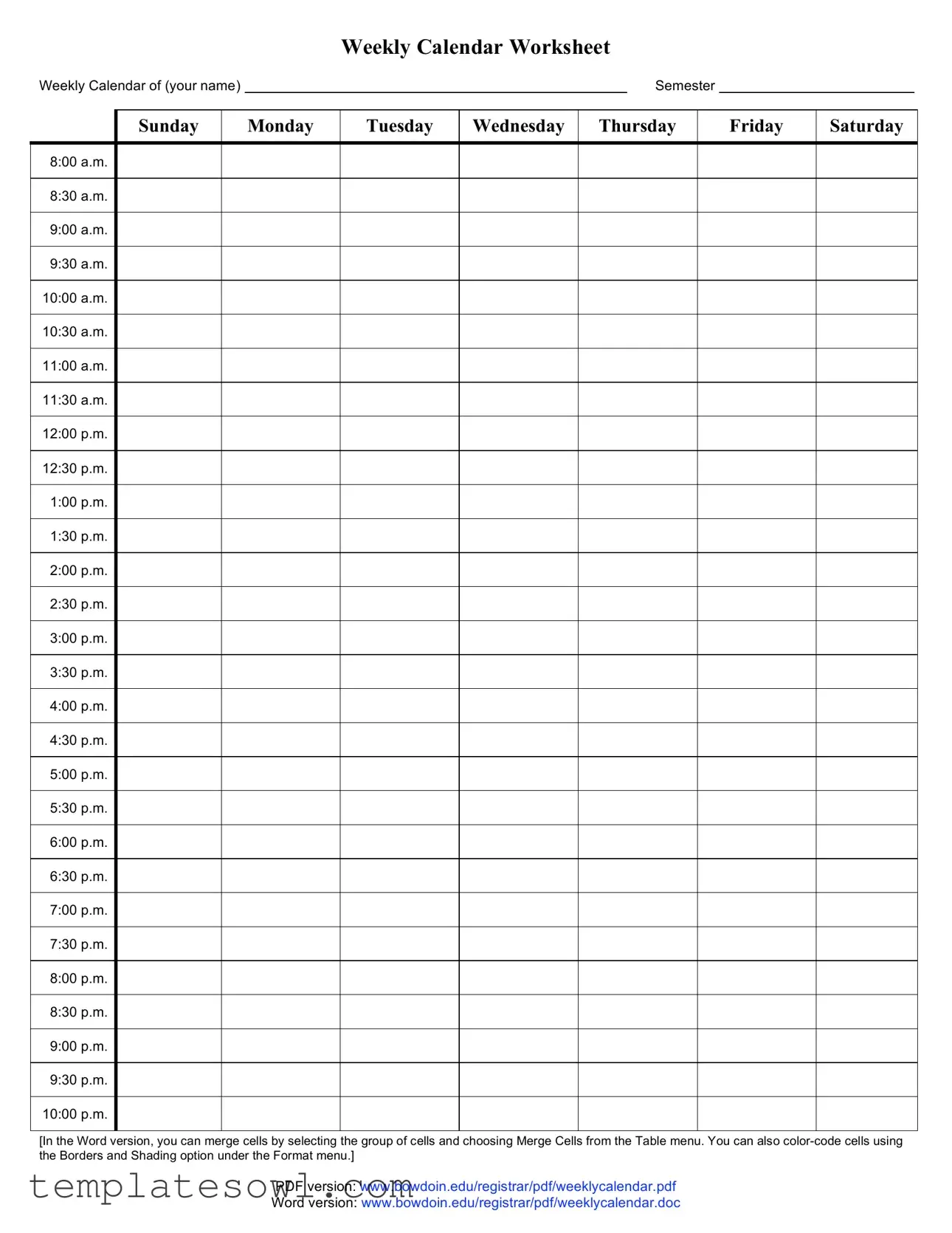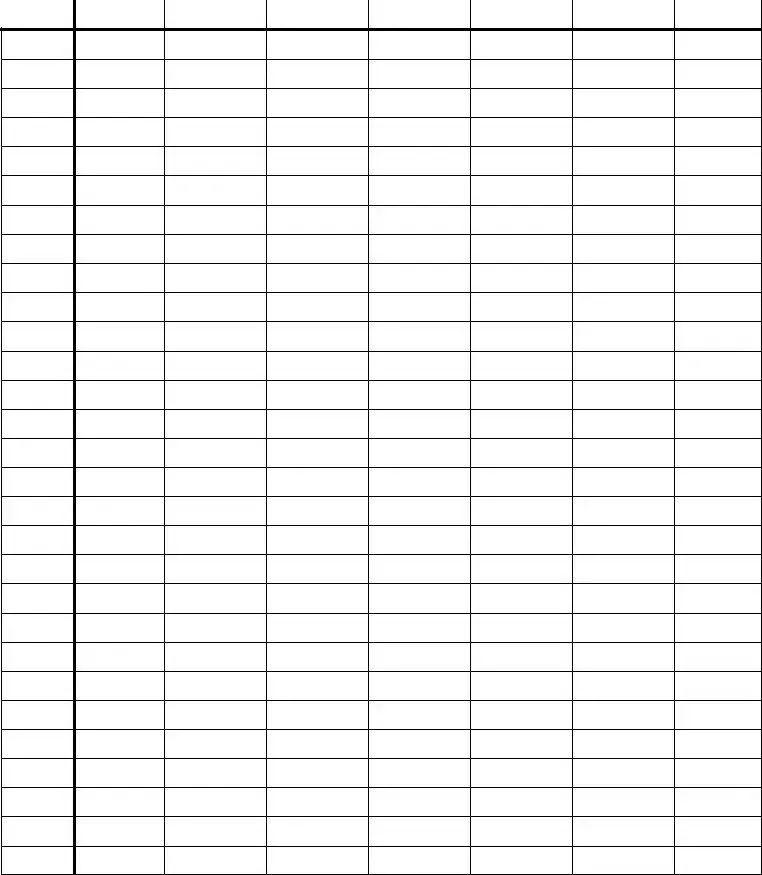What is the purpose of the Weekly Calendar form?
The Weekly Calendar form is designed to help individuals plan and organize their weekly schedules. By filling it out, users can visually allocate time for classes, meetings, study sessions, and personal activities. This tool promotes time management skills and assists in identifying free time or potential scheduling conflicts.
How can I access the Weekly Calendar form?
The Weekly Calendar form is available in both PDF and Word formats. The PDF version can be accessed at www.bowdoin.edu/registrar/pdf/weeklycalendar.pdf, while the Word version can be found at www.bowdoin.edu/registrar/pdf/weeklycalendar.doc. Users can choose whichever format they prefer to complete their weekly schedules.
Can I customize the Weekly Calendar form?
Yes, the Weekly Calendar form is customizable, especially in the Word version. Users can merge cells to create larger blocks of time for activities by selecting the desired cells and choosing the Merge Cells option from the Table menu. Additionally, you can color-code cells for better visual organization by using the Borders and Shading feature found under the Format menu.
What time slots are included in the Weekly Calendar?
The Weekly Calendar spans from 8:00 a.m. to 10:00 p.m., offering half-hour increments. This extensive time range allows users to schedule activities throughout their day, accommodating early morning commitments and late evening events, ensuring a comprehensive overview of their weekly engagements.
Is there a specific format I should use to fill out the Weekly Calendar?
When filling out the Weekly Calendar, there is no strict format, but clarity is important. Users can write in activities, appointments, or commitments in the respective time slots. Use clear and concise descriptions to make it easy to reference later. Consistency in the format helps when tracking various activities throughout the week.
What are the benefits of using a Weekly Calendar?
Using a Weekly Calendar offers multiple benefits, including improved time management, enhanced organization, and reduced stress. By having a visual representation of one’s tasks and commitments, individuals can prioritize effectively, allocate time wisely, and keep track of deadlines. It also fosters a sense of accomplishment as activities are completed, contributing to a more structured approach to one’s week.

